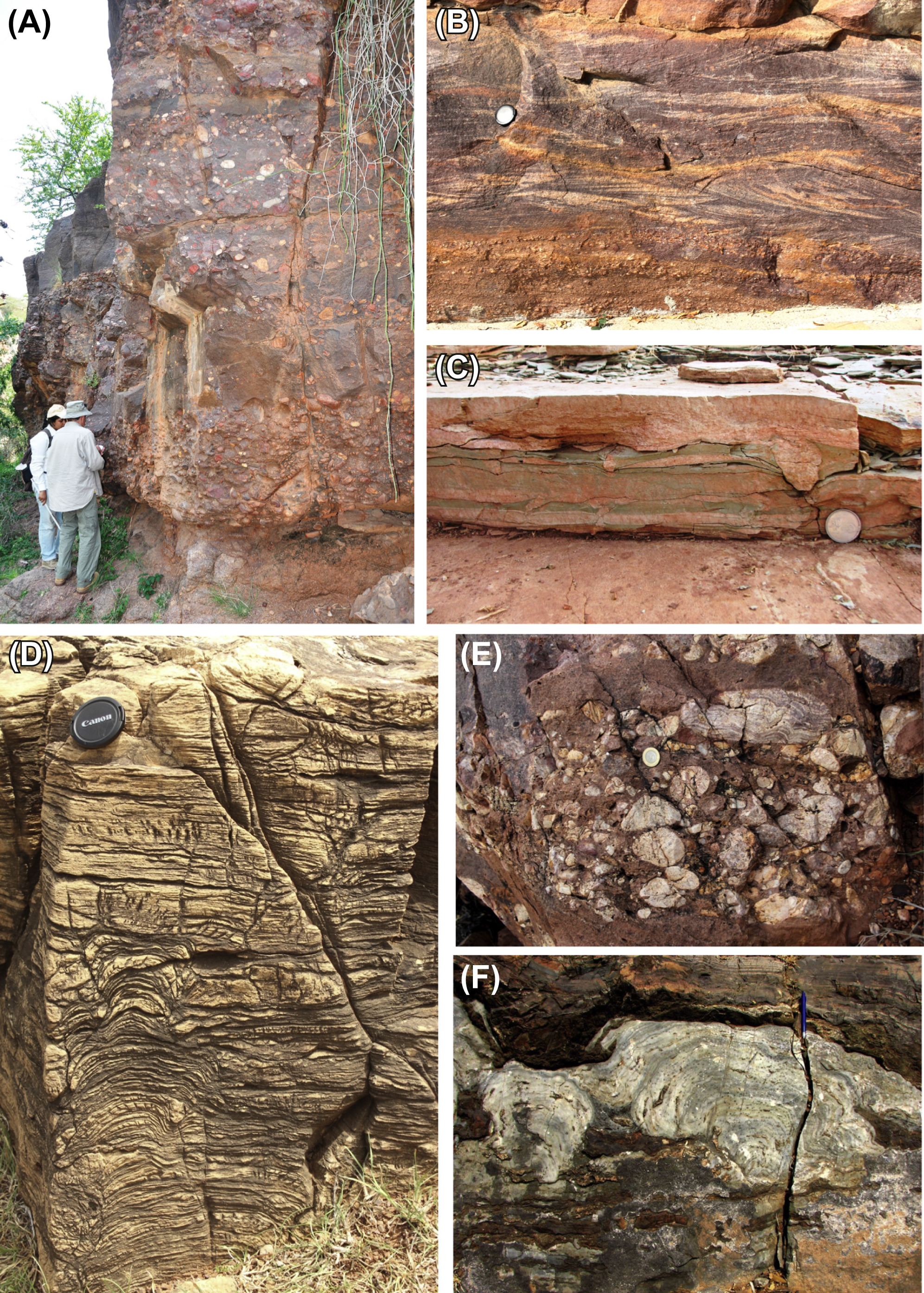Pulivendla Quartzite Fm
Lithology and Thickness
Conglomerate and quartzite; about 90 m thick. Consisting dominantly of medium-to-thick bedded quartz arenite with sparse pebbly sandstone and conglomerate at the basal part, has restricted strike continuity across the Papaghni sub-basin. Pebble size clasts of quartzite, chert, jasper, and occasional silicified stromatolitic dolomite, set in a coarse sandy matrix occur in the basal conglomerate lenses, with 10- to 15-cm-thick massive to normally graded beds (Fig. image E). In the Yagantipalle section, the conglomerate grades upward to well-sorted quartz arenite mostly with trough cross-strata, planar cross-strata, and plane parallel stratification, deposited as shoaling-up bars with slight pinch and swell beds. Poorly sorted fine-grained sandstone and siltstone constitute the interbar areas between shoal bars. Locally, deformed cross-strata are also present.
[Figures: Field photographs showing lithology and sedimentary features in the Papaghni Gr of the Cuddapah Supergroup. Gulcheru Quartzite Fm - (A) basal conglomerate overlying granitic basement off Parnapalli; and (B) pebbly grit grading to rough cross-stratified coarse sandstone. (C) Heterolithic sandstone-shale at Gulcheru Quartzite Fm / Vempalle Fm transition. (D) Vempalle Fm - stromatolitic limestone, (E) Pulivendla Quartzite Fm - basal conglomerate; note silicified stromatolite remnant in a large pebble. Tadpatri Fm - (F) silicified stromatolite (hemispheroidal forms) intercalated with basaltic flow (dark band). (from Saha et al., 2016)]
Relationships and Distribution
Lower contact
Unconformity onto Vempalle Fm (upper Papaghni Gr)
Upper contact
Overlain by Tadpatri Fm
Regional extent
GeoJSON
Fossils
Age
Depositional setting
Subtidal bar to intertidal. Presence of symmetric to slightly asymmetric sinuous to straight crested ripples with tuning fork bifurcation, and bimodal, bipolar cross-beds, together with desiccation cracks on the upper surfaces of well-sorted quartz arenite beds indicate wave‒tide dominated setting of deposition with intermittent exposure. The high maturity of the sandstones indicates that the sediment accumulation was in critical balance with extensive sedimentary recycling, and deposition was at or very close to mean sea level.
Additional Information
